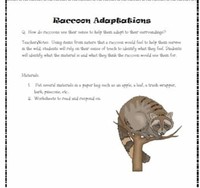Facts about Raccoon

Captive raccoons douse their food more frequently when a watering hole with a layout similar to a stream is not farther away than 3 m (10 ft).
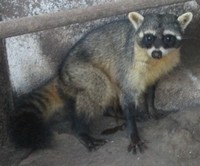
The crab-eating raccoon (Procyon cancrivorus) is native to marshy and jungle areas of Central and South America (including Trinidad and Tobago).

P. pygmaeus, the "Cozumel Island raccoon," is a much rarer species than the other two.

An archaeological study showed that Maya from Cozumel used raccoons of reduced stature, which suggests that the size reduction of this raccoon is not a recent phenomenon.
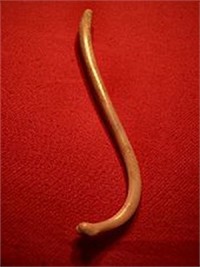
The raccoon, whose method of locomotion is usually considered to be plantigrade, can stand on its hind legs to examine objects with its front paws.

The common raccoon has a grayish fur, with alternating light and dark rings on the tail and a distinctive black mask around the eyes.

A notable exception to the association with dousing behabior is Russian, where raccoon is named yenot (????) due to similarity between raccoon and genet furs.

In areas with heavy vehicular traffic and extensive hunting, these factors can account for up to 90% of all deaths of adult raccoons.
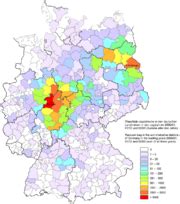
Urbanization, the expansion of agriculture, deliberate introductions, and the extermination of natural predators of the raccoon have probably caused this increase in abundance and distribution.

In Austria and Germany, if one is going to keep raccoons, it has been required by law to keep at least two individuals to prevent loneliness.

When food is plentiful, raccoons can develop strong individual preferences for specific foods.

In 2003, there was the first confirmed report of a human fatality in the United States after transmission of the rabies virus from a raccoon.

Primary causes of raccoon mortality include humans (hunting, trapping, cars), malnutrition, and disease.

The "common raccoon," P. lotor, also known simply as "the raccoon," is the most widely distributed species, with a natural range from southern Canada to Panama.

The percentage of urban raccoons sleeping in abandoned or occupied houses varies from 15% in Washington, D.C. (1991) to 43% in Kassel (2003).

The shape and size of a raccoon's home range varies depending on age, gender, and habitat, with adults claiming areas more than twice as large as juveniles.

Among others, the Dakota Sioux believed the raccoon had natural spirit powers, since its mask resembled the facial paintings, two-fingered swashes of black and white, used during rituals to connect to spirit beings.

Similar tooth and skull structures suggest procyonids and weasels share a common ancestor, but molecular analysis indicates a closer relationship between raccoons and bears.

A fifth island raccoon population, the Cozumel raccoon, which weighs only 3-4 kilograms and has notably small teeth, is still regarded as a separate species.

Experts have cast doubt on the veracity of observations of wild raccoons dousing food, with some finding in favor of and other opposing.

Other experts challenge such arguments and even may give advice on feeding raccoons and other wildlife.

Like other predators, raccoons searching for food can break into poultry houses to feed on chickens, ducks, their eggs, or feed.

Ironically, it is unlikely either Crockett or the actor who played him, Fess Parker, actually wore a cap made from raccoon fur.

In 1780, Gottlieb Conrad Christian Storr placed the raccoon in its own genus Procyon, which can be translated either to "before the dog" or "dog-like".

Raccoons were also exterminated in Cuba and Jamaica, where the last sightings were reported in 1687.

Almost two-thirds of the area responsible for sensory perception in the raccoon's cerebral cortex is specialized for the interpretation of tactile impulses, more than in any other studied animal.

Raccoons are unusual in that their thumbs (though not opposable) and human-like hands give them a lot of dexterity, allowing them to open many closed containers.

Four subspecies of the common raccoon endemic to small Central American and Caribbean islands were often regarded as distinct species after their discovery.
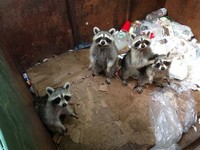
Raccoons have a reputation as being clever and mischievous and their dexterous, slender, human-like hands enable them to open many closed containers (such as garbage cans and doors).

Raccoons usually do not prey on domestic cats and dogs, but individual cases of killings have been reported.

The adjacent range of the upper Mississippi Valley raccoon covers all US states and Canadian provinces to the north of Louisiana, Texas and New Mexico.

The meaning and significance of the Raccoon Priests Gorget, which features a stylized carving of a raccoon and was found at Spiro Mounds, Oklahoma, remains unknown.

report that research conducted by many different scholars concludes that the Cozumel raccoon and the common raccoon are separate species.

Hunters can tell the progress of tracking by the type of bark emitted by the dogs; a unique bark indicates the raccoon has been "treed."

Among the main symptoms for rabies in raccoons are a generally sickly appearance, impaired mobility, abnormal vocalization, and aggressiveness.

In Central America, the crab-eating raccoon's range overlaps with that of the common raccoon, P. lotor.

The first edition of the cookbook The Joy of Cooking, released in 1931, contained a recipe for preparing raccoon.

A much rarer species, the "Cozumel raccoon," P. pygmaeus, is native to Cozumel Island off the Atlantic coast of Yucatan.
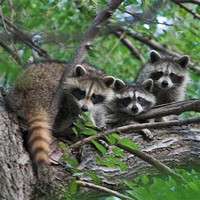
The word "raccoon" was adopted into English from a native Powhatan term, as used in the Virginia Colony.

Sexually mature raccoons often show aggressive natural behaviors such as biting during the mating season.

The smallest specimens are found in Southern Florida, while those near the northern limits of the raccoon's range tend to be the largest (see Bergmann's rule).

Young raccoons are vulnerable to losing their mother and to starvation, particularly in long and cold winters.

Relocating or killing raccoons without a permit is forbidden in many urban areas on grounds of animal welfare.

The raccoons live in densities of about 17-27 individuals per square kilometer .

The increasing number of raccoons in urban areas has resulted in diverse reactions in humans, ranging from outrage at their presence to deliberate feeding.

Due to its adaptability, the raccoon has been able to use urban areas as a habitat.

Native American stories such as "How raccoons catch so many crayfish" from the Tuscarora tribe centered on its skills at foraging.

Studies of their morphological and genetic traits in 1999, 2003, and 2005 led all these island raccoons to be listed as subspecies of the common raccoon.

During the wet season, fruit and vegetation are more abundant and become a large portion of the raccoons’ diet.

Petroglyphs with engraved raccoon tracks were found in Lewis Canyon, Texas; at the Crow Hollow petroglyph site in Grayson County, Kentucky; and in river drainages near Tularosa, New Mexico and San Francisco, California.

The raccoon's tail ranges from 8 to 16 inches (20 to 41 cm) in length Male raccoons are generally larger than females.

New habitats that have recently been occupied by raccoons (aside from urban areas) include mountain ranges, such as the Western Rocky Mountains, prairies, and coastal marshes.

Raccoons can carry rabies, a lethal disease caused by the neurotropic rabies virus carried in the saliva and transmitted by bites.

Raccoons can become obese and suffer from other disorders due to poor diet and lack of exercise.

Some captured raccoons had developed antibodies to certain diseases.

Raccoons can swim with an average speed of about 5 km/h (3 mph) and can stay in the water for several hours.

Both share a comparatively dark coat with long hairs, but the upper Mississippi Valley raccoon is larger than the eastern raccoon.

On the island, the Cozumel raccoons exist only in very specific habitats under certain conditions.

The dogs track the raccoon until it seeks refuge, usually in a tree, where it is either harvested or left for future hunts.

Merycopotamus, Libycosaurus and all hippopotamids can be considered to form a clade, with Libycosaurus being more closely related to hippos.

The heaviest recorded wild raccoon weighed 28.4 kg (62.6 lb), by far the largest weight recorded for a procyonid.
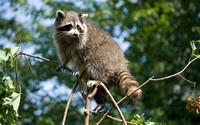
Stanislas Dehaene reports in his book The Number Sense raccoons can distinguish boxes containing two or four grapes from those containing three.

The tropical "crab-eating raccoon," P. cancrivorus, ranges from Costa Rica through most areas of South America east of the Andes down to northern Argentina and Uruguay.

Urine and feces left at shared latrines may provide additional information about feeding grounds, since raccoons were observed to meet there later for collective eating, sleeping, and playing.

Raccoons usually mate in a period triggered by increasing daylight between late January and mid-March.

Raccoons are thought to be color blind or at least poorly able to distinguish color, though their eyes are well-adapted for sensing green light.

Raccoons are usually kept in a pen (indoor or outdoor)—also a legal requirement in Austria and Germany—rather than in the home where their natural curiosity may result in damage to property.

Serious attacks on humans by groups of nonrabid raccoons are extremely rare and are almost always the result of the raccoon feeling threatened; at least one such attack has been documented.

Another stable population exists in northern France, where several pet raccoons were released by members of the U.S. Air Force near the Laon-Couvron Air Base in 1966.

At the beginning of winter, a raccoon can weigh twice as much as in spring because of fat storage.

Raccoons are common throughout North America from Canada through Mexico, and continuing into Panama in Central America, where the subspecies P. l. pumilus coexists with the crab-eating raccoon (P. cancrivorus).

The most characteristic physical feature of raccoons is the area of black fur around the eyes, which contrasts sharply with the surrounding white face coloring.

Raccoon skulls have a short and wide facial region and a voluminous braincase.

Tree hollows in old oaks or other trees and rock crevices are preferred by raccoons as sleeping, winter, and litter dens.
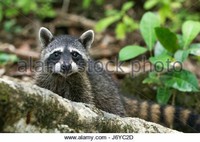
P. cancrivorus, the tropical "crab-eating raccoon," ranges from Costa Rica through most areas of South America east of the Andes down to northern Argentina and Uruguay.
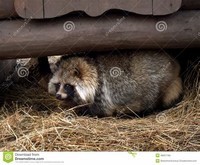
The eastern raccoon occurs in all US states and Canadian provinces to the north of South Carolina and Tennessee.

Procyon, the taxonomic unit in which raccoons are placed, is a genus in the mammalian family Procyonidae and order Carnivora.

Studies in 1963, 1973, 1975, and 1992 concentrated on raccoon memory showed they can remember the solutions to tasks for up to three years.

Raccoons are sometimes raised as pets, although they may act unpredictably and aggressively and it can be quite difficult to teach them to obey and understand commands.

Some of the most important bacterial diseases that affect raccoons are leptospirosis, listeriosis, tetanus, and tularemia.

The colloquial abbreviation coon sometimes used for the common raccoon is used in words like coonskin for fur clothing and in phrases like old coon as a self-designation of trappers.

The common raccoon's diet consists of about 40 percent invertebrates, 33 percent plant material, and 27 percent vertebrates.

Coatis (Nasua and Nasuella) and raccoons (Procyon) have been considered to possibly share common descent from a species in the genus Paranasua present between 5.2 and 6.0 million years ago.

Raccoons provide important ecological values and also add to the human fascination with nature.

Cozumel has a population of feral cats and domestic cats and dogs that can transmit diseases to the raccoons .
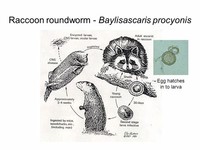
The larvae of the Baylisascaris procyonis roundworm, which can be contained in the feces and seldom causes a severe illness in humans, can be ingested when cleaning raccoon latrines without wearing breathing protection.

Only a few studies have been undertaken to determine the mental abilities of raccoons, most of them based on the animal's sense of touch.
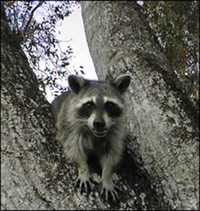
The most important natural predators of the common raccoon are bobcats, coyotes, and great horned owls, the latter mainly preying on young raccoons.

Among all fruits and crops cultivated in agricultural areas, sweet corn in its milk stage is particularly popular among raccoons.

The common raccoon has a natural range from southern Canada to Panama, and has been introduced to continental Europe.

The main danger to the pygmy raccoon is development of Cozumel due to the tourism industry .

The raccoon's paws lack an opposable thumb and thus it does not have the agility of the hands of primates.

The Bahaman raccoon (P. l. maynardi) was classified as endangered by the IUCN in 1996.

Raccoons have a dual cooling system to regulate their temperature; that is, they are able to both sweat and pant for heat dissipation.

The habitat specificity of pygmy raccoons is in large part due to the type of foods they consume.
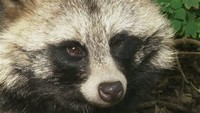
The fur of raccoons is used for clothing, especially for coats and coonskin caps.

The Cozumel raccoon (Procyon pygmaeus), also called the pygmy raccoon, is a critically endangered species of raccoon endemic on Cozumel Island off the coast of the Yucatan Peninsula, Mexico.
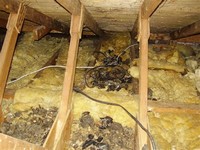
Urine and feces left at shared latrines may provide additional information about feeding grounds, since raccoons were observed to meet there later for collective eating, sleeping, and playing.

Bird nests (eggs and after hatchlings) are frequently preyed on, and small birds are often helpless to prevent the attacking raccoon.

Genetic studies have shown that the closest relatives of the raccoon are the ring-tailed cats, coatis, and cacomistles.

Raccoons can live up to 16 years in the wild, though most do not make it through their second year.

Home range sizes of urban raccoons are only three to 40 hectares (7.5–100 acres) for females and eight to 80 hectares (20–200 acres) for males.
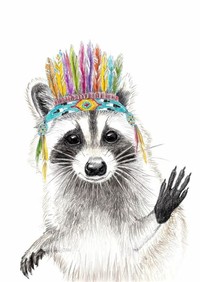
The raccoon also appears in Native American art across a wide geographic range.

have presented data suggesting that the raccoons’ total home range size is about 0.65 ± 0.26 km2 .
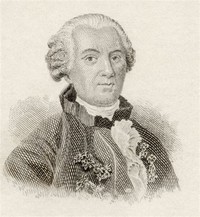
Naturalist Georges-Louis Leclerc, Comte de Buffon (1707–1788) believed that raccoons do not have adequate saliva production to moisten food, necessitating dousing, but this is certainly incorrect.
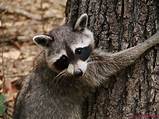
Raccoons are able to identify objects before touching them with vibrissae located above their sharp, nonretractable claws.

Raccoons sample food and other objects with their front paws to examine them and to remove unwanted parts.

The crab-eating raccoon resembles its northern cousin, the common raccoon, in having a bushy ringed tail and "bandit mask" of fur around its eyes.

The most frequent natural cause of death in the North American raccoon population is distemper, which can reach epidemic proportions and kill most of a local raccoon population.

Raccoon (sometimes racoon) is the common name for any of the New World mammals comprising the genus Procyon of the Carnivora family Procyonidae, and particularly is associated with the common raccoon, P. lotor.

Studies in 1963, 1973, 1975, and 1992 concentrated on raccoon memory showed they can remember the solutions to tasks for up to three years.
Raccoons can carry several dangerous diseases including rabies. While incidents of rabid raccoons attacking humans are rare, it's not something you want to risk. Raccoons carry two other diseases, roundworm and leptospirosis, that can also be transmitted to humans and pets.Aug 28, 2013
Raccoons are wild animals, not pets, and even “tamed” are extremely high maintenance and require an experienced, knowledgeable guardian. Even several generations of captive bred raccoons still exhibit all of their wild instincts throughout their lives. 2. It's illegal in certain states in keep raccoons as pets.May 16, 2015
Raccoons usually live together in small, loose groups. Their original habitats are mixed or deciduous forests, but due to their adaptability, they are often found in urban areas where they can be considered pests at times. Raccoons consume a varied diet that includes berries, insects, fruit and small mammals.


